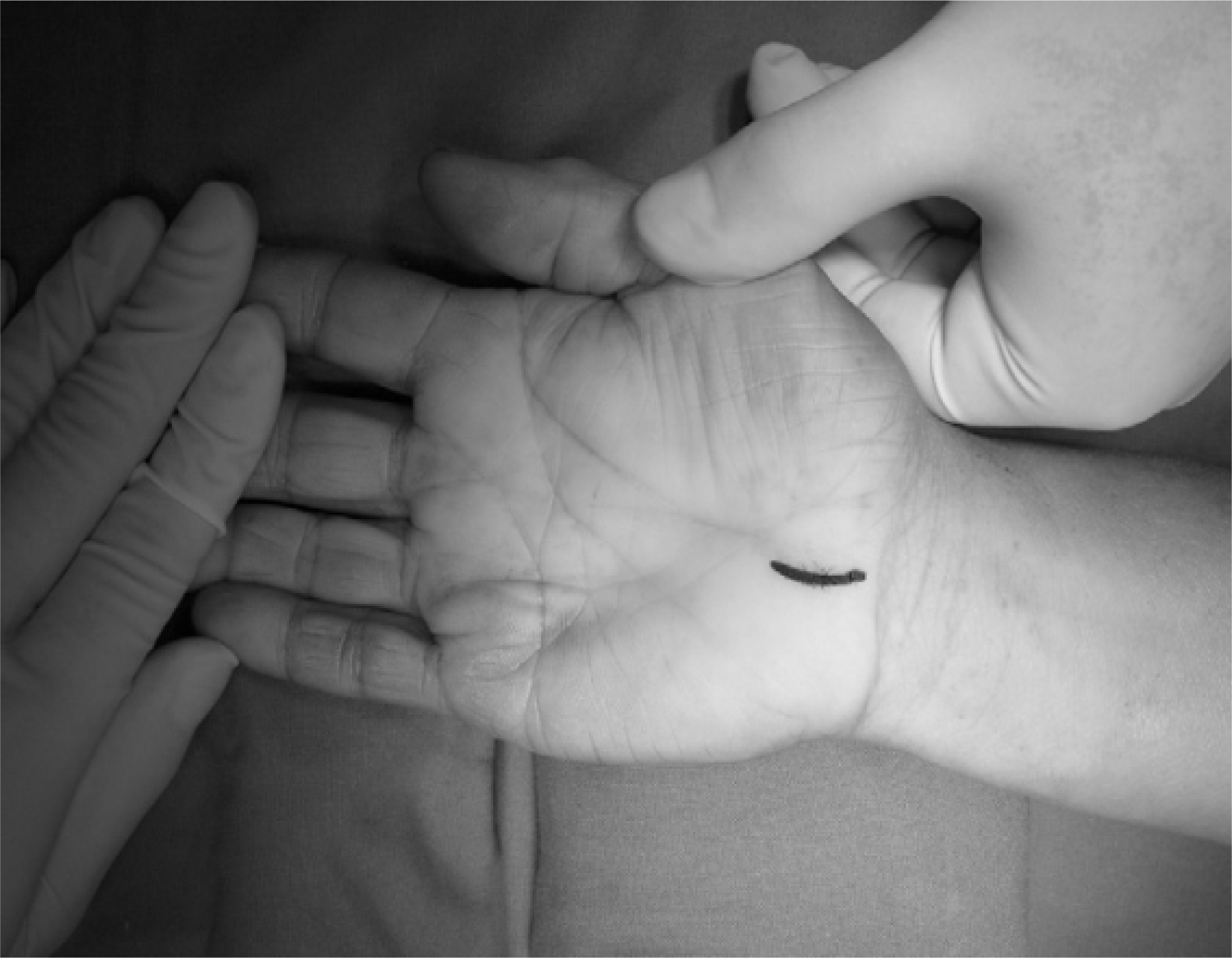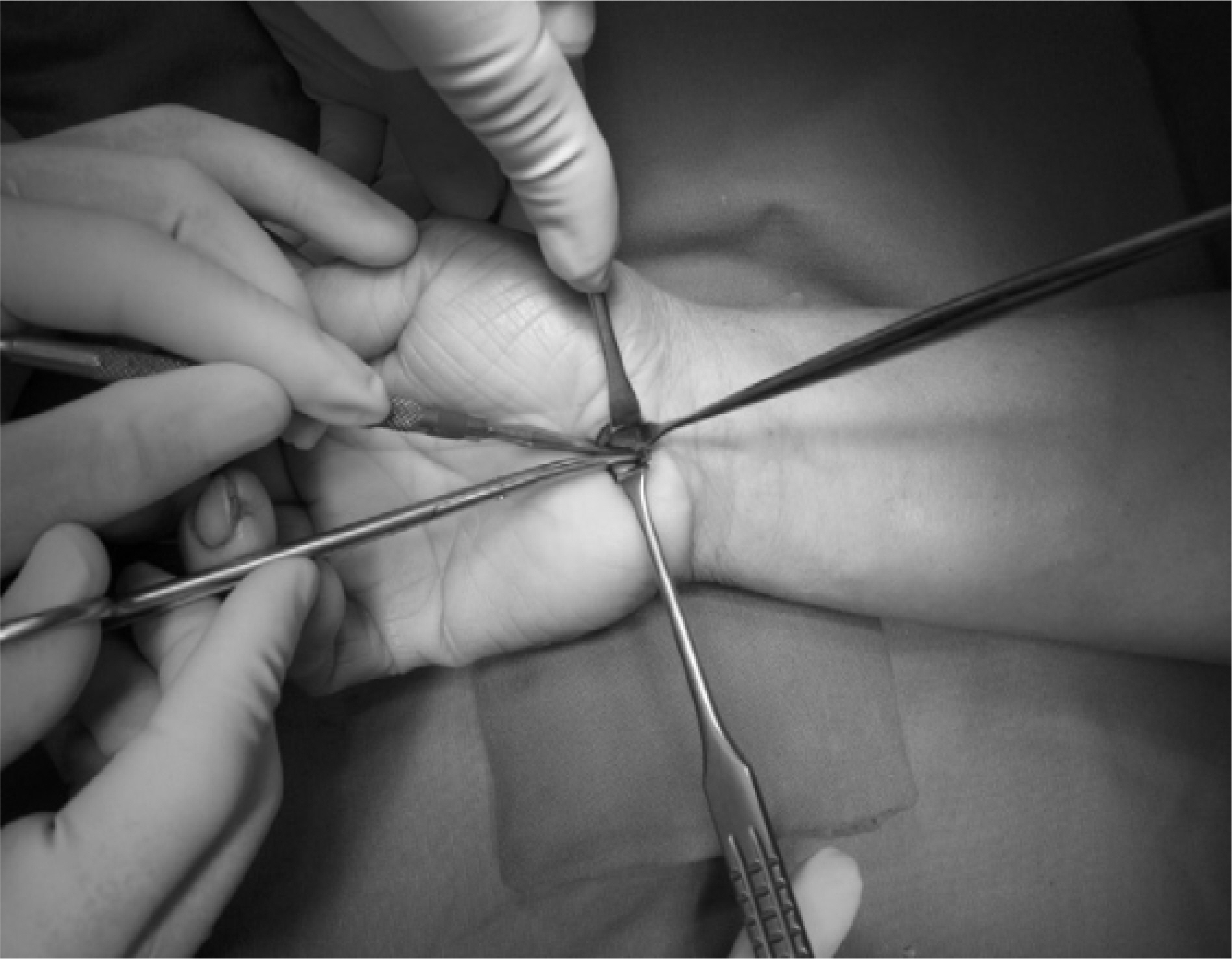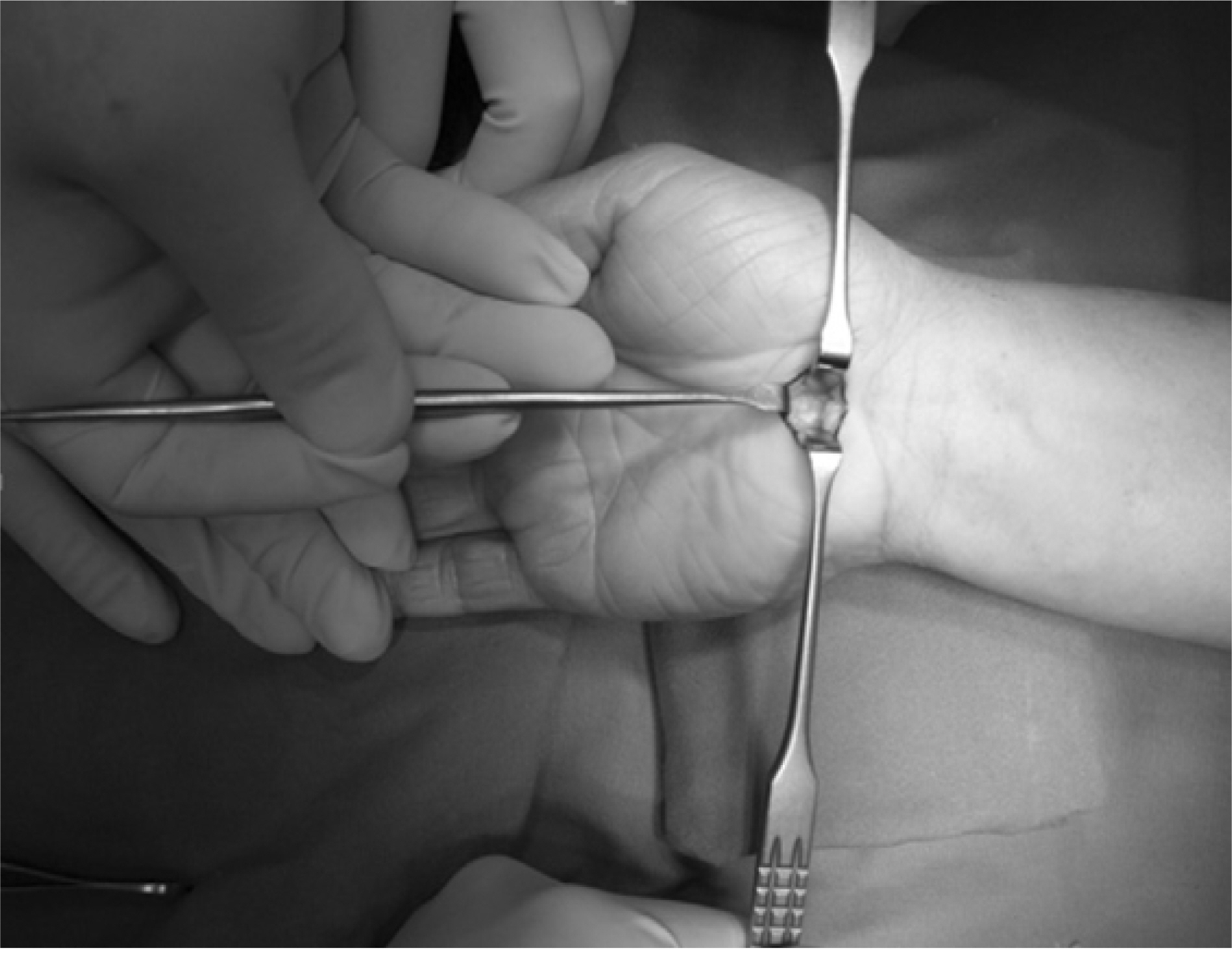References
1. Biyani A, Downes EM. An open twin incision technique of carpal tunnel decompression with reduced incidence of scar tenderness. J Hand Surg Br 1993;18:331–4.
2. Bromley GS. Minimal-incision open carpal tunnel decompression. J Hand Surg Am 1994;19:119–20.
3. Serra JM, Benito JR, Monner J. Carpal tunnel release with short incision. Plast Resconstr Surg. 1997;99:129–35.
4. Cellocco P, Rossi C, Bizzarri F, Patrizio L, Costanczo G. Mini-open blind precedure versus limited open technique for carpal tunnel release: a 30 month follow-up study. J Hand Surg Am. 2005;30:493–9.
5. Szabo RM, Gelberman RH, Dimick MP. Sensibility testing in patients with carpal tunnel syndrome. J Bone Joint Surg Am 1984;66:60–4.
6. Phalen GS. The carpal tunnel Syndrome. Seventeen years experience in diagnosis and treatment of six hundred fifty-four hands. J Bone Joint Surg Am 1996;48:211–28.
7. Chung KC, Hanmill JB, Walters MR, Hayward RA. The Michigan Hand Outcome Questionnaire (MHQ): assessment of responsiveness to clinical change. Ann Plast Surg 1999;42:619–22.
8. Paget J. Lectures on surgical pathology Lindsay and Blakiston published 1854. p.700.
9. Learmonth JR. The principle of decompression in the treatment of certain disorders of peripheral nerves. Surg Clin North Am 1933;13:905–13.
10. PHALEN GS. Spontaneous compression of the median nerve at the wirst. J Am Med Assoc 1951;145:1128–33.
11. Yoo JD, Yun YH, Jung JM, Kim JH, Ko YD, Jung WC. Carpal tunnel release in the Bilateral carpal tunnel syndrome. J Korean Soc Surg Hand 2003;8:56–9.
12. Okutsu I, Ninomiya S, Hamanaka I, Kuroshima N, Inanami H. Measurement of pressure in the carpal canal before and after endoscopic management of carpal tunnel syndrome. J Bone Joint Surg Am 1989;71:679–83.
13. Berger RA. Endoscopic carpal tunnel release. A current perspective. Hand Clin 1994;10:625–36.
14. Agee JM, McCarrol HR, North ER. Endoscopic carpal tunnel release using the single proximal incision technique. Hand Clin 1994;10:647–59.
15. Chow JC. Endoscopic carpal tunnel release. Clin Sports Med 1996;15:769–84.
16. Shinya K, Lanzetta M, Conolly WB. Risk and complications in endoscopic carpal tunnel release. J Hand Surg Br 1995;20:222–7.
17. Tountas CP, MacDonald CJ, Meyerhoff JD, Bihrle DM. Carpal tunnel syndrome. A review of 507 patients. Minn Med 1983;66:479–82.
18. Ariyan S, Watson HK. The palmar approach for the visualization and release of the carpal tunnel. An analysis of 429 cases. Plast Reconstr Surg 1977;60:539–47.
19. Kim JS, Shin KS, Lee DH, Jang IH, Kim YH. Endoscopic release of carpal tunnel syndrome. J Korean Orthop Assoc 1999;34:447–552.
20. Berger RA. Endoscopic carpal tunnel release. A current perspective. Hand Clin 1994;10:625–36.
21. Chow JC. Endoscopic carpal tunnel release. Two-portal technique. Hand Clin 1994;10:637–46.
22. Feinstein PA. Endoscopic carpal tunnel release in community-based series. J Hand Surg Am 1993;18:451–4.
23. Kim JS, Shin KS, Lee DH, Jang IH, Kim YH. Endoscopic release of carpal tunnel syndrome. J Korean Orthop assoc 1999;34:447–552.
24. Bande S, De Smet L, Fabry G. The result of carpal tunnel release: Open versus endoscopic technique. J Hand Surg Br 1994;19:14–7.
25. Ferdinand RD, MacLean JG. Endoscopic versus open carpal tunnel release in bilateral carpal tunnel syndrome. A prospective, randomised, blinded assessment. J Bone Joint Surg Br 2002;84:375–9.





